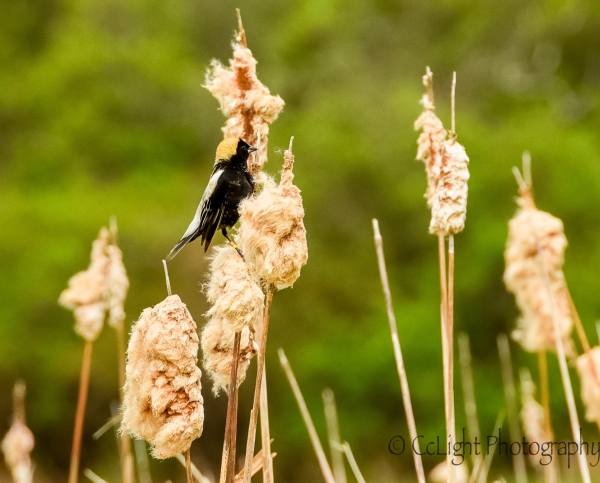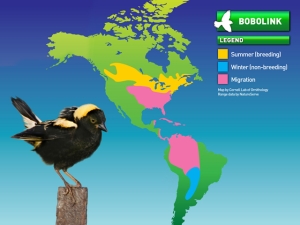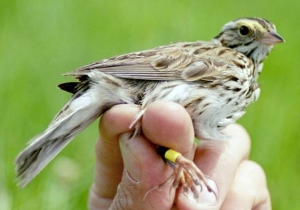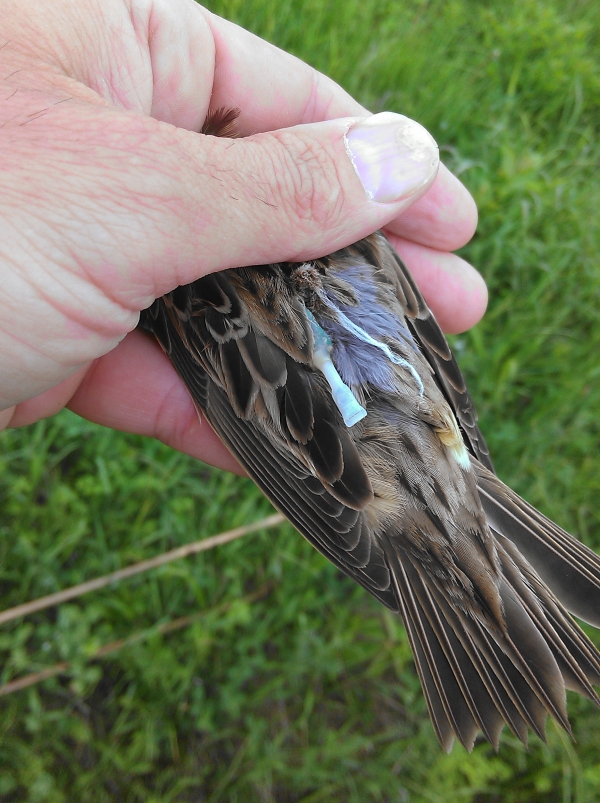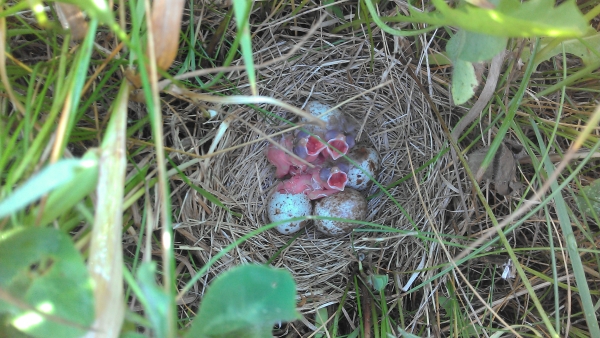Can you send details of your "intensive mowing program" and the timing in Shelburne ..... I'm in the Upper Valley which should be quite similar??
Thanks
Roy
The Survival of Grassland Birds
We welcome guest blogger and ornithologist Noah Perlut as he reports on more than a decade of grassland bird research in the pastures and fields of Shelburne Farms. The Farm is proud to have supported this research, to have learned ways to manage our fields and pastures for the survival of grassland birds, and to have inspired government and private groups to support efforts to protect these species.
It’s the new “Survivor”!
You’re a Bobolink, a grassland bird, that's just flown to Shelburne from Argentina. Over the next two months, you must: find a mate, build a house, lay five eggs, incubate them for 10 days, feed those hungry nestlings all day long for another 10 days, and then feed them for another three weeks as they flit around with friends.
After that, you have to molt all your feathers and gain 25%-50% of your body mass. You need the store of energy to fly to Venezuela for a month (September), then on to Bolivia for a month, and after that, fly to Argentina for four months. Then it’s back to Vermont again.
Avoid all hazards en route: don’t fly into a building, get eaten by a raptor or a cat, shot or poisoned by a rice farmer in Venezuela or Bolivia; definitely don’t fall into the Atlantic Ocean or Gulf of Mexico while flying across it (you will be shark food). Oh, and don’t pick a nesting field that gets mowed while you are trying to raise young.
I have studied Bobolinks and Savannah Sparrows nesting on and around Shelburne Farms since 2002, and their stories never fail to captivate me. Along with colleagues, mentors, and students, we have found ~2,500 nests and banded ~7,000 adults and chicks—and we have learned a lot.
We know that the timing and intensity of hay-harvest affects these birds’ reproduction and survival (earlier hay harvest, and more frequent harvest = bad news). But we are lucky to work in a region with creative federal and state agents who want to find lasting solutions to problems. As a result, on Shelburne Farms, we developed and tested an intensive mowing program that works for both farmers and birds. This program has been broadly adopted locally and throughout the region.
We have also learned about the spicy sex life of Savannah Sparrows! A male commonly has two females on his territory, but more than half of all the chicks born on a field are sired by a male other than the one feeding them. So lots of nests on a territory does not necessarily mean lots of biological sons and daughters.
It turns out that Bobolinks and Savannah Sparrows in and around Shelburne Farms do something that is really weird for songbirds: they come back and breed near where they were born (known as natal philaptry). It’s a risky decision, because there is a good chance that a bird’s dad, mom, grandparents, cousins, siblings and/or half-siblings are nearby too, increasing the potential for inbreeding (which can have lots of yucky consequences).
But this behavior also allows us to track geneologies. We have followed some Bobolink maternal lines through five generations!
The geneological data allow us to ask all kinds of interesting ecological and evolutionary questions like: What physical characteristics are heritable? Is reproductive effort and success heritable? Are the characteristics that one selects in a mate heritable? Is the timing of migration heritable? Is wintering location heritable? And so much more!
With this information we hope to do two things:
(1) Tell the landowners the life-stories of the individual birds they steward. These stories are dramatic and awe-inspiring; and stories of how far one travels from one’s birthplace and what happens after are stories we can all relate to in our family lives. In sharing the stories, we hope that landowners will be more willing to consider land management practices that balance bird and farmer needs.
(2) We are trying to answer all the exciting ecological and evolutionary questions as described above.
So we are indeed busy. But when you see us in the fields these summer, be sure to wave. If we don’t wave back, don’t take it personally—we have the tractor beams on high focused on finding a nest or catching a bird. The fun continues in our 15th field season…..
For more information on conservation of bobolinks, visit Vermont Center for Ecostudies, or the Bobolink Project of Audubon Vermont and National Audubon

